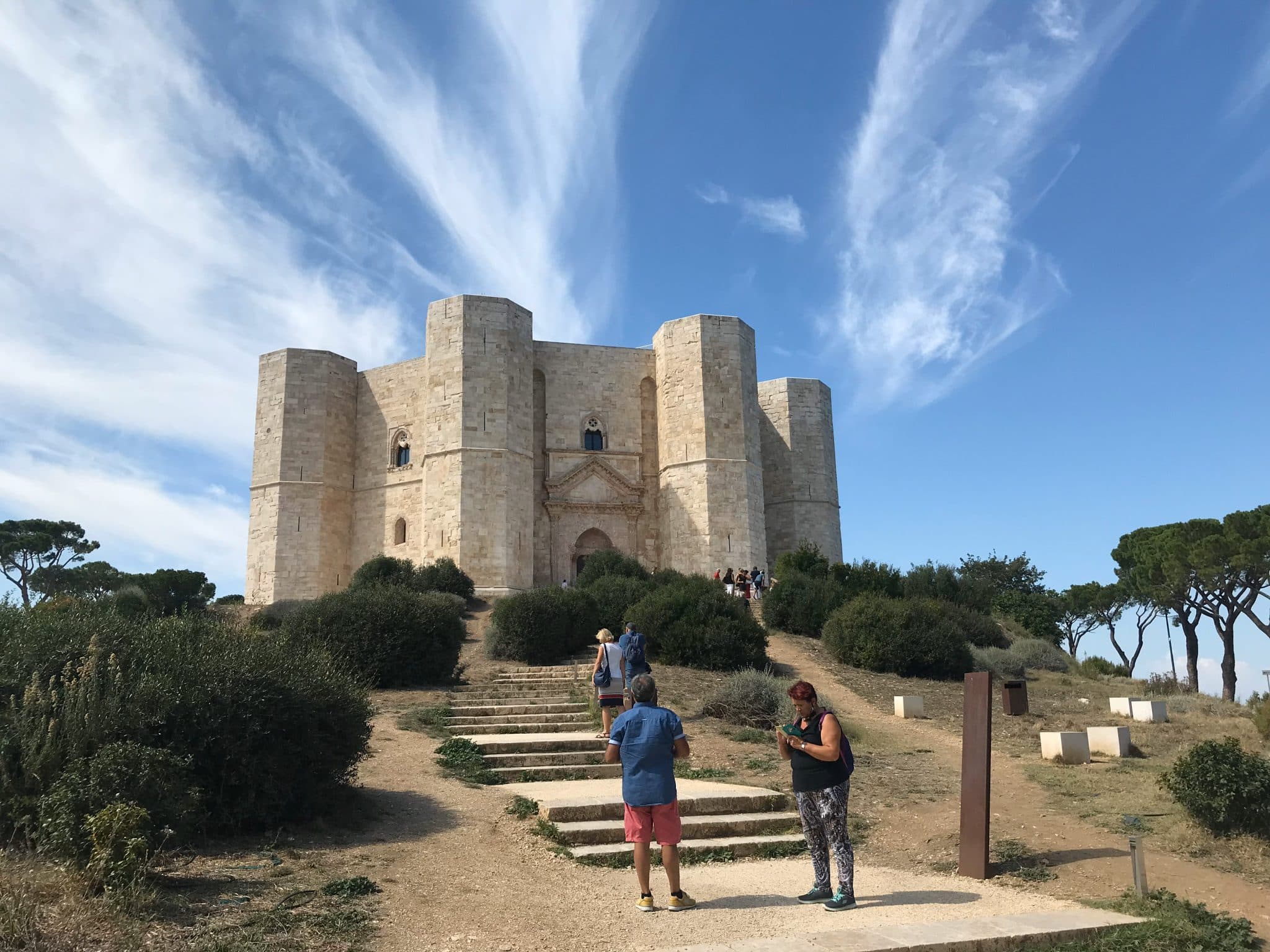
Visible from afar, like the crown of a wall, Castel del Monte rests on a hill. In the immense plain of Puglia , the castle declares itself to be a dominant landmark. The people call it the “Belvedere” or the “Balcony of Puglia”. The name “Stone Crown of Puglia” is more appropriate. The Hohenstaufen Castle was built in 1240 under Frederick II as a hunting lodge. The floor plan of the castle is octagonal, and it also has octagonal towers. On the upper floor were the imperial apartments.
Castel del Monte – The Light and the Stone and a Myth
The plan for the monumental castle, which in its austere simplicity sits enthroned on the top of a hill like an erratic block, is said to go back to Emperor Frederick II himself. It expresses his personal preferences for astronomy, geometry and his fanaticism for all laws. Perfectly formed, but it is not the form of secular buildings. The building seems to be chiseled out of the harsh light of the south. In the luminous flux, time becomes space here. The mathematical rigor of the floor plan is extraordinary. This is not a pure architectural principle, but a built philosophy. Therefore, the square stands for the world and this world, the circle for the otherworldly infinity of God, while the octagon represents the mediating instance between heaven and earth.
Certain circles saw in Frederick II the Antichrist – yes, even the son of Satan. His curiosity was to blame for this assessment. This drove him again and again to look beyond the boundaries of his own culture and his own faith. In ten years of construction, a castle was built that completely met the client’s expectations and was to become his legacy.
Charm and secrets of a mysterious castle
No matter from which direction you look at the castle, the octagonal body appears of perfect symmetry. Similar to a cut crystal that you turn in your hands again and again in admiration. Only in movement does the form become apparent. The building looks massive and light, wreathed with octagonal towers – self-contained and invincible. To the east are the entrance, triumphal arch and cathedral portal.
Anyone who enters here crosses a room to step out into the open again. In the octagonal courtyard, the shade measures the time after the position of the sun. From the ground floor, spiral staircases lead to the upper floor in three of the eight towers. The stones of Castel del Monte speak of power and mysticism. The magic of the building, which combines mathematical calculation with Christian symbolism, is amazing. The number eight is not only an imperial symbol, it stands for the resurrection of man. Castel del Monte, which represents the personality of its creator and harmoniously combines cultural elements of antiquity, northern Europe and the Islamic world, was declared a UNESCO World Heritage Site in 1996.
Können wir Ihnen helfen?
Benötigen Sie Unterstützung bei Ihrer Reiseplanung oder weitergehende Informationen zu einzelnen Reisezielen? Wir freuen uns über Ihre Kontaktaufnahme.

